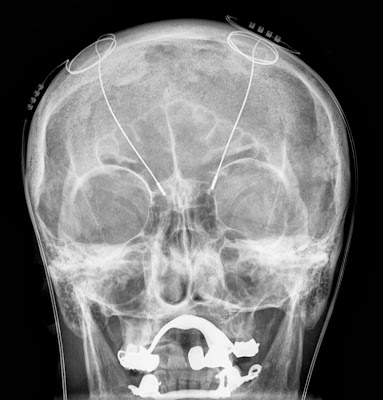One
of the reasons it’s been a few weeks since a post is a recent Philosophy of
Mind essay that has been consuming most of my free time. My chosen topic; If
you were uploaded to a computer, would you retain your youness? After doing some deep soul-searching for this
essay, I was delighted to hear CBC’s program Spark include a segment of Virtual
Reality last week, and the physical possibility of it. The segment (which I
will link to at the bottom of the page) is an interview with Jody Culham, a
professor at the department of psychology at Western University
This
is shown in a genius study by Antonio Ranguiel at CalTech. He brought in hungry
students and gave them each money that they could bid with. He then presented
them with an auction of different food. The variable was how the food was
presented, some students were shown simply the name of
the food, some a picture, some the food behind Plexiglas and some the actual
food. Students were willing to spend 50-60% more on real food than any
of the presentations, even the food behind the Plexiglas which was at the
same level as the pictures of the food. This supports the idea that it’s not
just that we can see the 3D-ness of the object. It’s that we could reach out
and touch the food if we wanted to.
So is there any hope in achieving the perfect
visual representation of something? Culham doesn't think so. “Some of the
success of the more appealing [virtual] products is actually that they haven’t
only focused on making very slick displays, but that they have focused on
enabling the user to interact with them in a very intuitive way.” Think touch
screens, wii games. We are interacting with these things as we would if they
were real objects. It’s not the images we care about, it’s the level of
interactions we can have with them.
How about virtual reality. Even with the lack of object-realness, if the
interactions are the same, could it work? Could we live in a matrix-like world?
This time, Culham is optimistic. “Presumably as far as the brain is
concerned as long as the inputs and the outputs are the same then we shouldn't be able to tell the difference between reality and virtual reality.”
Imagine this future world: Babies would be genetically
engineered and grown in labs, and taught by teacher robots. At the peak age, the brain would be mapped and a functionally equivalent program would be made. The program
is turned on, and your new conscious life as a computer program begins. Your
body would be disposed of, and you continue to live indefinitely in a
computer-simulated reality. We hijack Mother Nature’s work, and improve it,
make it last longer.
Would you want to live in this world? Would
the interactions with virtual objects be enough? Would the interactions with
virtual people be enough? Or would you still be missing that something?
Radio Segment on Spark: http://www.cbc.ca/player/Radio/Spark/ID/2414455201/
Jody Culham's Lab: http://culhamlab.ssc.uwo.ca/culhamlab/
Antonio Ranguiel's Lab: http://www.rnl.caltech.edu/
Radio Segment on Spark: http://www.cbc.ca/player/Radio/Spark/ID/2414455201/
Jody Culham's Lab: http://culhamlab.ssc.uwo.ca/culhamlab/
Antonio Ranguiel's Lab: http://www.rnl.caltech.edu/

